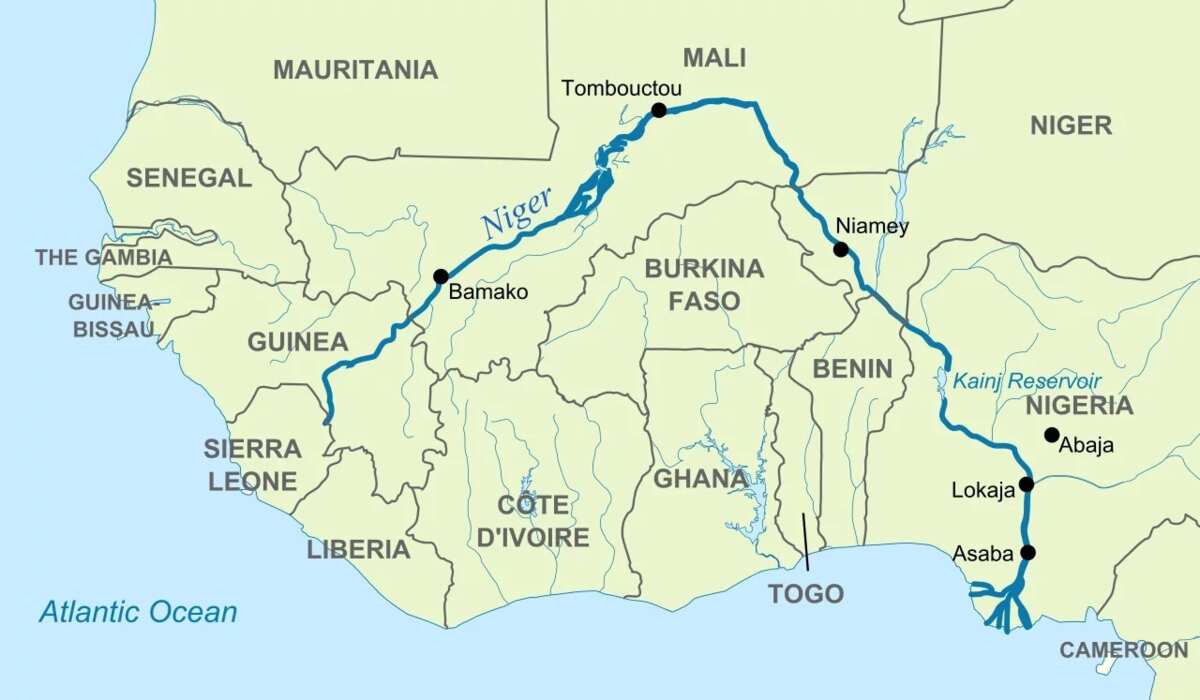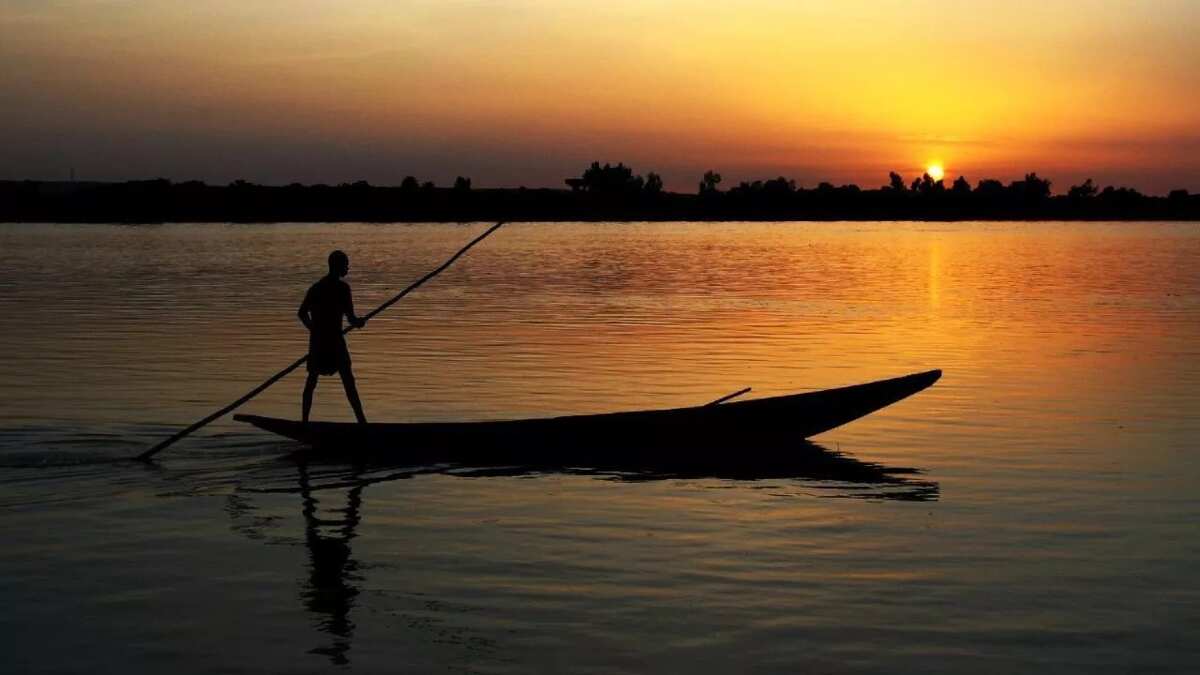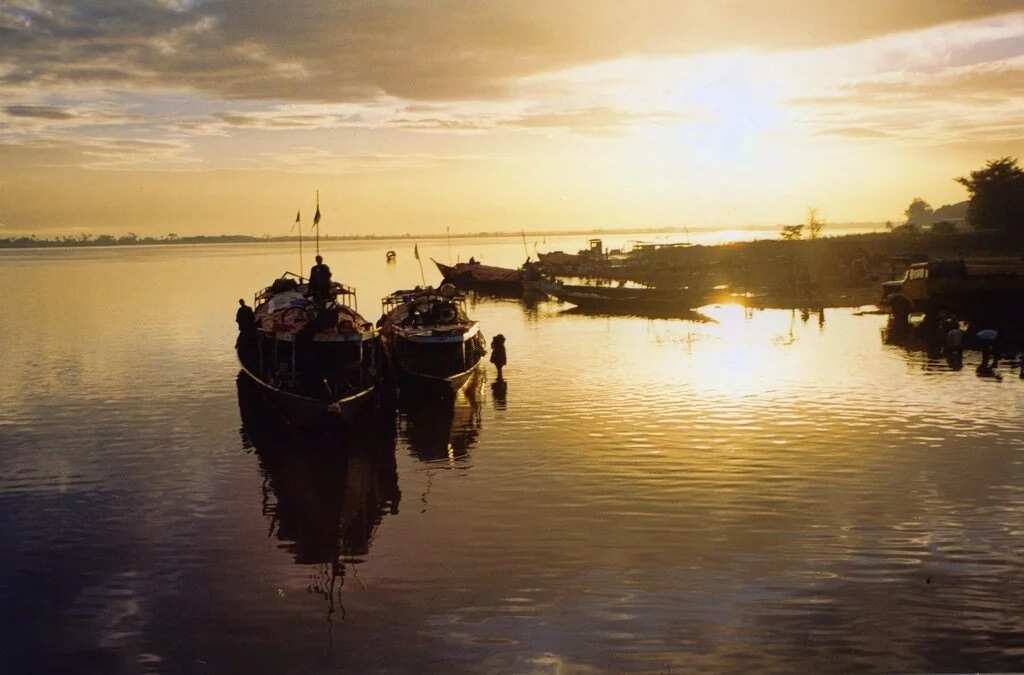The Niger River is obviously a relevant river among other west-African rivers. It takes the eleventh place among all world longest rivers and takes bronze among all rivers on the African continent. The Niger River is very painterly, its beauty is captivating and eye-catchy. To get detailed background of one of the African symbols keep reading. We will tell you the history of the River Niger and its secrets.
History of River Niger
The origin of the River Niger’s name is still unknown. According to one probable of the versions, its name comes from the Latin word “niger”, which means "black". The native-born population calls the river differently.
This African river is notable for its unusual waterway. It has the form of a boomerang, this fact has been confusing for 2.5 thousand years all geographers. The source of the Niger is only 240 km from the Atlantic coast. It would seem that the water should flow towards the salt water, as all the self-respecting rivers of the world do. However, in contradiction with the laws of geology, the Niger flows not towards the ocean, but to the opposite.
Its waters flow northeast to the Sahara desert and then turn to the southeast in 20 km from the antique city of Timbuktu. Only after this, it rushes towards the Atlantic coast. This is 3940 extra miles. The figure is impressive and requires an explanation.

Many experts believe that in antiue times when there was no Sahara, there were 2 rivers flowing in these places. Their journey began in the northern regions of Africa, and rivers flowed into a large lake near Timbuktu. A single stream flowed from it, which carried its waters to the Gulf of Guinea. It is conditionally called the Lower Niger.
Sahara began to form about 5 thousand years ago. Accordingly, the rivers and their sources disappeared. The lake also disappeared, and a new river appeared instead, it is formed from small streams and rivers of West Africa. It became the outgoing stream of the Lower Niger with a source near the Atlantic coast. The great desert radically has changed the whole North and Central Africa.
We have one open question: Who discovered the River Niger? Many scientists, travelers and geographers tried to research the Niger, some of them even forfeit their lives.
Who discovered the source of River Niger?
In the Middle Ages, Arab geographers believed that the Niger was connected with the Nile. This idea belongs to the Greek geographers - according to Herodotus, for instance, the Niger was the source of the Nile, flowing from Atlas. The first, who has challenged this point view was V.G. Brown in his work "Travels in Africa”, written in 1799.

In 1796, the young Scottish physician Mungo Park became the first of the Europeans, who reached the Niger. Park has found that the Niger flows to the east and has nothing to do with either Senegal or the Gambia - before Europeans believed that the Niger is divided into these rivers. M. Park was going to find out where the real flow of the Niger was directed, but has caught of the tropical fever, he had to turn back. In 1805, he again came to the Niger and explored his current from Bamako to Bussang, where he was killed by local residents.
The lower course of the Niger at that time was unknown and no discovered, but it was believed that it empties into the Gulf of Guinea. This opinion was confirmed by the travels of Dixon Denham and Hugh Clapperton in 1825 and the second trip of Clapperton in 1827. In the late 20-ies of the 19 century, the French traveler René Calle visited Timbuktu, posing as an Arab merchant.

Who discovered the mouth of River Niger?
In 1830, the British government sent Richard Lander, the Clapperton's companion in the previous journey, to the banks of the Niger, for a more thorough investigation of the course of the river. Lander with his brother reached Bussang by land, came down from there downstream and, having sailed a path of 900 km, reached the Guinea Bay. In 1832, Lander entered the Niger through the Benin Bay and swam up the river. The same journey, simultaneously with him, was made by Laird and Oldfield, from which the latter swam 750 km from the mouth to the Rabbi.
In 1946, Jean Sauvie, Pierre Ponty and filmmaker Jean Rouche (citizens of France and workers of the French Colony) decided to make a journey along the full length of the river, which most likely nobody ever did before them. They began their journey from the very origins of the Niger in the Kisidugu area, Guinea-Bissau, first on foot, as conditions didn't allow the possibility of rafts using. After they traveled on different boats, as the Niger expanded and deepened. Pierre Ponti stopped traveling to Niamey, and Jean Sauvie together with Jean Rouche reached the ocean in 1947.

They filmed their way onto a 16-millimeter camera, from these filming, Jean Rush assembled his first 2 ethnographical documentary movies: "Au pays des mages noirs" and "La chasse à l'hippopotame". The film served as an illustration to the book Rush, which was published later, "Le Niger En Pirogue" (1954), as well as the book "Descente du Niger" (2001). Pierre Ponti also carried a typewriter with him and sent articles to the newspapers along the way.
The traveler from Norway Helge Hjelland undertook expedition along the full length of the Niger in 2005, beginning his journey to Guinea-Bissau. He also shot a documental film about his journey, which he called "The Cruellest Journey.






